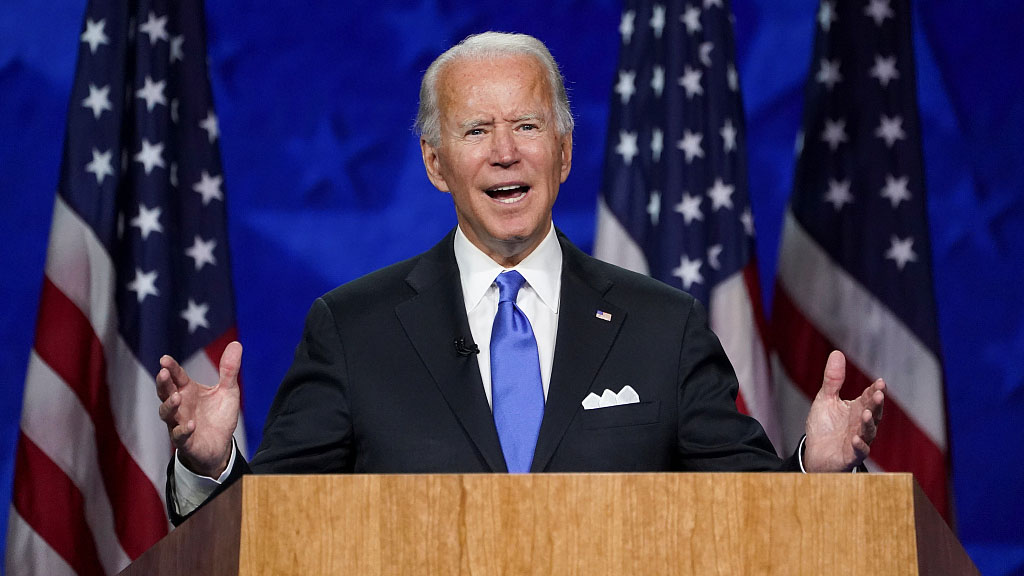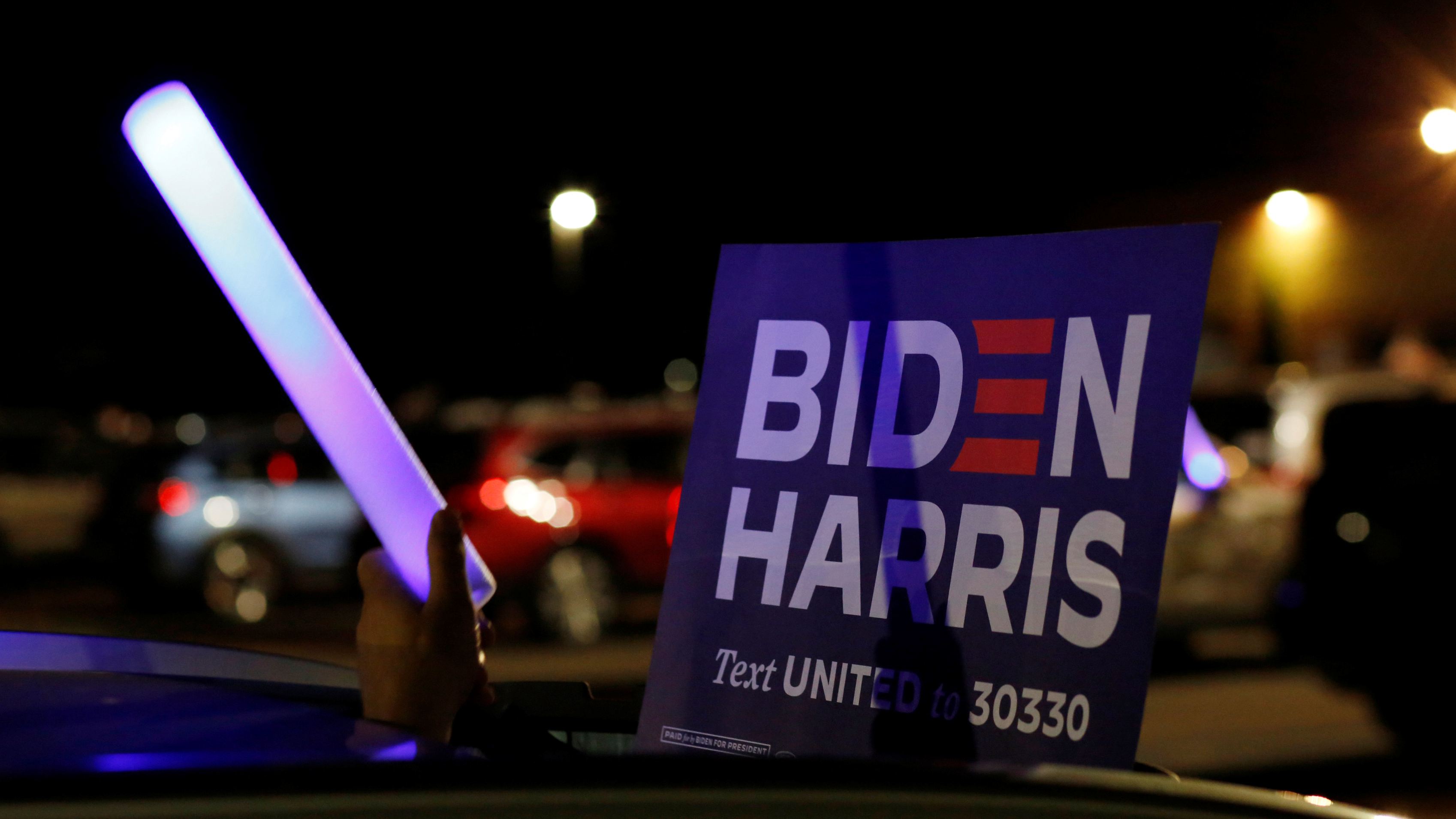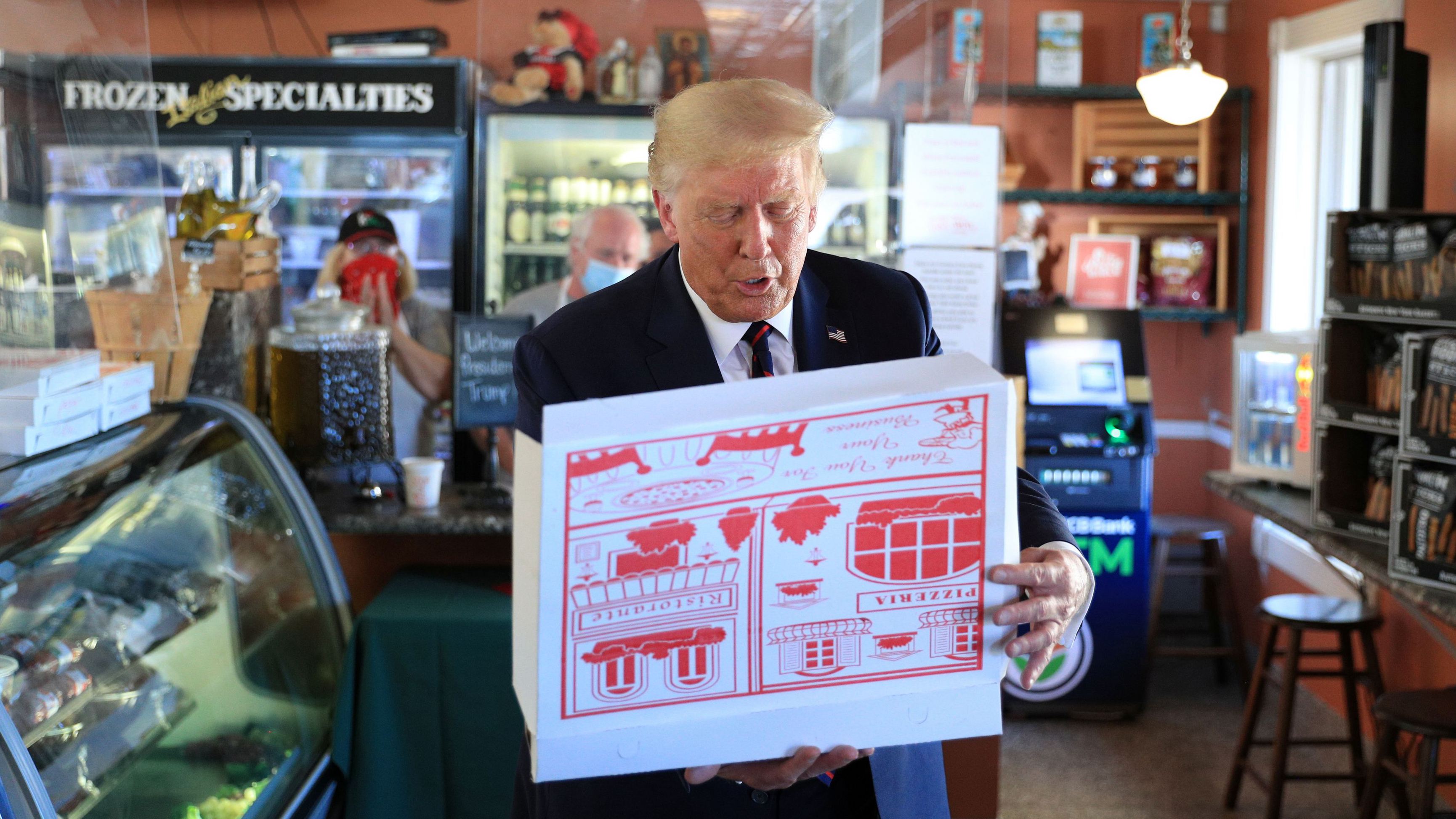After eight hours of slick TV production over four days, the virtual Democratic National Convention drew to an end on Thursday evening with Joe Biden accepting the party's nomination for the U.S. presidency.
Here are five takeaways from the Democratic showpiece:
1. Biden exceeds expectations
Expectations for Biden's acceptance speech were low – partially set by Donald Trump and his surrogates, who have questioned the Democratic nominee's mental acuity and mocked his verbal slipups – but the former vice president delivered a powerful speech almost flawlessly.
The 77-year-old isn't known as a great orator, but his address on Thursday, following a moving testimony from Brayden Harrington, a young boy Biden had helped deal with a stutter, was executed with a mix of compassion and anger, combining criticisms of Trump with a promise of a brighter future.
02:48

The speech built on the convention trend of contrasting Biden's record and character with that of Trump, repeatedly referencing "light" and "darkness" while arguing the election was "a battle for the soul of the nation."
Its fluency was reassuring to his supporters, and a undermined one of the Trump campaign's main attack lines.
Read more:
Biden accepts Democratic nomination, slams Trump
Graphics: Follow the money in the 2020 campaigns
Running mate Kamala Harris also gave a well-received speech on Wednesday, in a week in which the California senator showed she was more than comfortable on the big stage. Despite some misgivings over record during the primary race, the 55-year-old's historic selection was welcomed by all wings of the party.
The final day of the convention also showcased Biden's family, and featured expressions of support from other primary rivals including Bernie Sanders, Elizabeth Warren, Cory Booker, Amy Klobuchar, Andrew Yang and Pete Buttigieg in a show of party unity.
2. Governing is for tomorrow
If the Democratic Party is a big tent, the convention was a giant marquee.
From conservative John Kasich to progressives like Alexandria Ocasio-Cortez, people with vastly different views were united by a common goal – defeating Trump on November 3.

Democratic presidential nominee Joe Biden and his wife Jill Biden celebrate in front of fireworks after the former accepted the party's nomination, Wilmington, Delaware, August 21, 2020. /Reuters
Democratic presidential nominee Joe Biden and his wife Jill Biden celebrate in front of fireworks after the former accepted the party's nomination, Wilmington, Delaware, August 21, 2020. /Reuters
If the Biden-Harris ticket wins it won't be able to please all its supporters it when it comes to governing, but most seem willing to suspend policy spats for the sake of a unity message that makes a change in the White House more likely.
Biden set out a broad vision for what he would do in office in his acceptance speech and there was a heavy emphasis on his character, faith and family throughout – speakers lined up to give testimonials about the former vice president's small acts of kindness or empathy.
Throughout the week, Trump's personality and suitability for the top job, as well as his record on COVID-19, climate change and foreign policy, came under attack from a succession of speakers, most notably the Obamas.
3. The Obama party
Biden has been a central cog of the Democrats for five decades and delivered a well-received speech on Thursday, but the convention showed that the stars of the party remain Barack and Michelle Obama.
The former first lady's very political speech on Monday and the former president's powerful, live condemnation of Trump on Wednesday were the other standout addresses of the week. Aside from Biden and Harris, the Obamas had the most speaking time at the convention.
02:02

"This administration has shown that it will tear our democracy down if that's what it takes to win," Barack Obama warned, while Michelle Obama argued that Trump was "simply in over his head."
Time will tell how the Obamas will be used in the coming two months of campaigning, but the couple clearly got under the skin of the president, who has done much to unpick Barack Obama's legacy, this week.
On Thursday evening, Trump told Fox News's Sean Hannity that the former first lady "had a lot of anger, a lot of hate" and tweeted in all-caps as his predecessor spoke on Wednesday – alleging that the Obama administration spied on his 2016 campaign and questioning the former president's support for Biden.
4. Vote!
For all the attacks on Trump, attempts to look to the future and a strong focus on racial justice, a message consistently stressed by speaker after speaker was simple: Vote.
Black voters, suburbanites, older people and college-educated women are prominent parts of Biden's support. Democrats know they need higher voter turnout in those key demographics to win, and are using 2016 as a cautionary tale.

A sign is displayed during a projection of the Democratic National Convention at a drive-in watch party in Derry, New Hampshire, August 20, 2020. /Reuters
A sign is displayed during a projection of the Democratic National Convention at a drive-in watch party in Derry, New Hampshire, August 20, 2020. /Reuters
Hillary Clinton won the popular vote in the 2016 election but lost the Electoral College, thanks to around 100,000 votes in three pivotal states.
"For four years, people have said to me, 'I didn't realize how dangerous he was!' 'I wish I could go back and do it over!' Or worst – ' I should have voted!'" Clinton said in her speech on Wednesday. "Well, this can't be another 'woulda, coulda, shoulda' election."
5. Convention bounce?
Presidential candidates typically receive an often short-lived polling boost after a party convention, but its how much of a connection the unique 2020 virtual event will have made.
TV ratings indicate lower interest than in 2016, though the Democratic Party argued many viewers had moved online. The television audience averaged around 20.6 million on the opening three nights this year against 25 million four years ago, according to Nielsen data.
The Democrats had star power, from actor Julie Louis-Dreyfus and TikTok star Sarah Cooper to basketball player Steph Curry and musician John Legend, but struggled to dominate a news cycle that Trump, for good or bad, inserted himself into.

U.S. President Donald Trump opens a pizza box while campaigning for re-election in Old Forge, Pennsylvania, August 20, 2020. /Reuters
U.S. President Donald Trump opens a pizza box while campaigning for re-election in Old Forge, Pennsylvania, August 20, 2020. /Reuters
The president spent the week, when not trolling the convention speakers on Twitter, on a tour of swing states. He landed in Pennsylvania on Thursday, attacking Biden in the state of the former vice president's birth before appearing on Sean Hannity's Fox News show in the evening.
The arrest of Trump's former senior adviser Steve Bannon on Thursday and a Senate intelligence committee report into the Trump campaign's contact with Russia in 2016 also hogged the headlines.
It was the Democrats' week, but the party didn't have the airwaves all to itself – eyes will be on the polls and fundraising numbers over the coming days to see if the virtual convention have had any impact on the race.